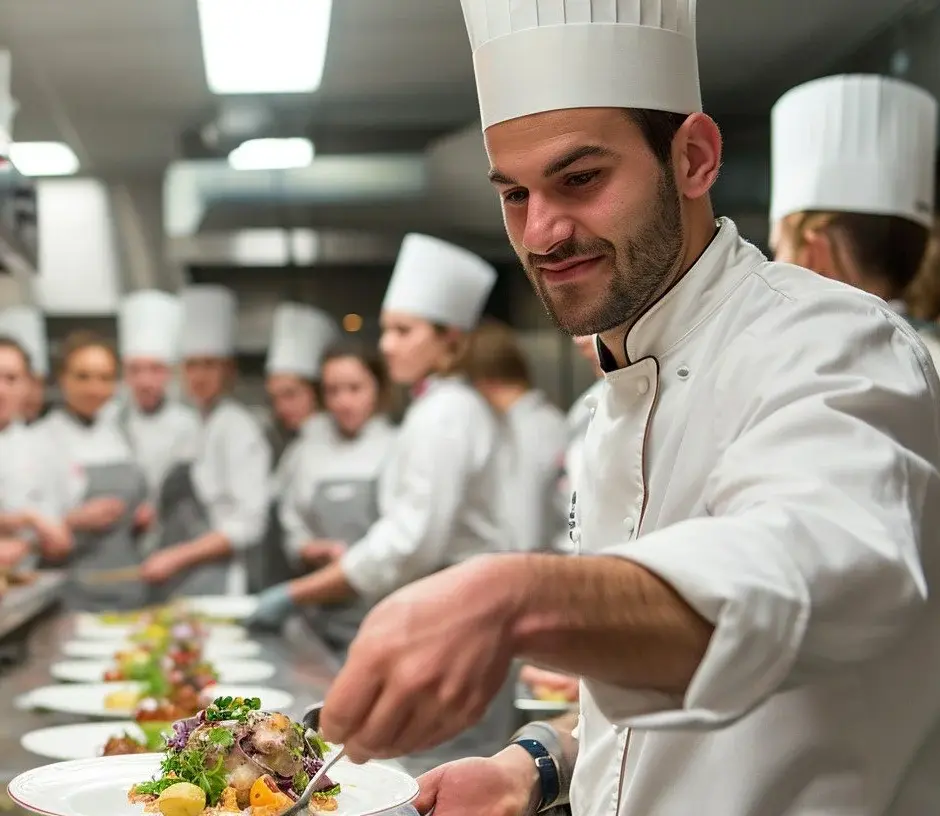Pests can be a nuisance and a health risk. They can contaminate food, damage property and spread diseases and harmful bacteria that cause food poisoning. No matter how good your business is, pests like insects or rodents can eventually become problematic.
Pests are often found near waste, food, and other areas where they can spread diseases. They can carry and spread harmful bacteria such as Salmonella, E. Coli, Campylobacter, and Listeria.
Food hygiene laws require businesses to protect against pests and have proper procedures to control them.
The pest control industry has grown in the past five years. Food businesses must follow hygiene laws, so more food businesses in the UK mean more pest control needs.
What is a Pest?
A pest is any living thing that negatively affects humans. This can include unwanted plants (weeds), fungi, worms, microbes (like bacteria or viruses), and insects.
What are the Different Types of Pests?
Food businesses often deal with four main types of pests:
- Rodents: rats and mice
- Insects: cockroaches, beetles, flies
- Birds: pigeons, seagulls, and similar birds
- Microbes: Bacteria, fungi and viruses

What is the Meaning of Pest Control
Pest control involves protecting our health and property. It is important for food safety and hygiene. Rodents eat about 20% of the world’s food supply. They also carry fleas, ticks, and mites and spread diseases to people and animals.
Cockroaches are dirty insects that can trigger allergies in 7–8% of people. Good pest control helps maintain food hygiene and health standards. Without it, food safety and health regulations would be hard to follow.
What are the 3 Methods of Pest Control
Physical Pest Control
This approach involves using non-chemical methods to manage pests through physical means or barriers. It is often used to prevent physical contaminants of food from entering an area or to capture and remove them.
Control Techniques
- Pest-proofing involves sealing cracks, gaps, and building entry points to prevent pests from entering. It can also involve installing screens on windows and doors.
- Traps includes using various types of traps to catch and kill pests. Common traps include glue traps, snap traps, and live traps. These are particularly useful for small animals like rodents and insects.
- Temperature Control means the application of extreme temperatures to kill pests. For instance, heat treatments can eradicate bedbugs by raising temperatures to lethal levels. Conversely, freezing can kill pests in food items or other stored products.
Advantages
- Non-toxic and safe for use around people and pets.
- Provides immediate results in some cases, such as with traps.
Disadvantages
- Requires regular maintenance and monitoring.
- May not be effective for large infestations or pests that are difficult to physically capture.

Chemical Pest Control
This method uses chemical substances to kill or repel pests that may cause danger to food. It is often used when other methods are not effective or practical.
Control Techniques
- Pesticides: These are chemicals designed to kill insects. They come in various forms, including sprays, powders, and granules. They can target specific pests like ants, cockroaches, or fleas.
- Rodenticides: Strong chemicals used to control rodent populations. These are typically in the form of bait or pellets and are placed in areas where rodents are active.
- Poison Baits: They are used to attract pests. The pests consume the bait and then return to their nests, where the poison can affect other members of the population.
Advantages:
Highly effective for large or difficult infestations.
Provides quick results and can target specific pests.
Disadvantages
Chemicals can be toxic to humans, pets, and beneficial insects if not used properly.
This may lead to pesticide resistance in pests over time.
Environmental impact if not handled carefully.

Biological Pest Control
This method uses natural predators, parasites, or pathogens to control pest populations.
Control Techniques
- Introducing Natural Predators: Release of predators such as ladybugs, which feed on aphids, or birds that eat insects. This helps reduce pest populations naturally.
- Using Parasites: Introducing parasites that specifically target pests. For example, parasitic wasps can lay eggs in or on pests like caterpillars, which are then consumed by the developing larvae.
- Planting Repellent Species: Growing plants that naturally repel pests. For instance, marigolds can deter nematodes in the soil, and certain herbs can repel insects.

Advantages
- Environmentally friendly and sustainable.
- Reduces the need for chemical pesticides.
- Can provide long-term pest management solutions.
Disadvantages
- Slow to show results compared to chemical methods.
- Requires careful management to avoid disrupting the local ecosystem.
- Effectiveness can be influenced by environmental conditions and pest species.
Each method has its strengths and is chosen based on factors such as the type of pest and environmental considerations. A combination of these methods is often used for the most effective pest control strategy.
What are the Ways of Controlling Pest Control in the Kitchen
Microbial or biological contamination is the most common type of food contamination. Kitchens must be use appropriate methods to prevent infestation of food by pathogens. Some of the ways of controlling bacterial pest control in the kitchen are:
Get Online Food Safety Courses
Food Hygiene And Safety
Check the CourseRated Excellent
on major review sites

Food Temperature Regulations
The Food Hygiene (England) Regulations 2006 require food businesses to manage food temperatures to prevent harmful bacteria growth. Keeping food at the right temperature helps lower the risk of food poisoning. Bacteria grow best in temperatures between 8°C and 63°C.ng, avoid storing food within this ‘Danger Zone’ temperature range.
Chilled Food
Chilled foods must be kept at or below 8°C. This is the temperature of the food itself, not just the air in the fridge. Aim for 5°C or lower to be safe, especially if you open the fridge door often.
Hot Food
After cooking or reheating, keep hot food at or above 63°C.

The Two-Hour Rule
You can keep hot food below 63°C for up to two hours while on display. Use a system to track the time and dispose of any food that has been out for more than two hours unless you are sure it is still safe. If the food is safe, quickly chill it to 8°C or below or reheat it to 63°C or more.
Defrosting
Defrost food in a way that prevents harmful bacteria or toxins from growing. Keep defrosting food at a safe temperature. If liquid from the defrosting food (like raw meat) could be a health risk, drain it properly. Handle the food carefully after defrosting to reduce the risk of bacteria and toxins.
Use By Dates and Shelf Life
The ‘Use By’ date is the last day the manufacturer guarantees the product is safe. Do not use or store products past this date.
Perishable, high-risk food types made and stored on-site should have a ‘Use By’ date. Generally, food should be used within two days of production.
Freezing and ‘Use By’ Dates
Do not freeze food labelled with a manufacturer’s ‘Use By’ date. Freezing can affect safety. If you must freeze them:
- Freeze on the day you buy or receive them, not on the last day of the shelf life.
- Label the package with the freeze date and the defrost date.
- Use the food on the day you defrost it.
FIFO Food Stock Rotation
FIFO is a storage method that enables the correct placement of food. The food with the earliest best-before or expiry date is placed at the front or on top in a visible position. The item with a later expiration date is placed on the back.
Proper food storage helps prevent cross-contamination and keeps food quality high.
Cross Contamination
Cross-contamination occurs when germs transfer from one surface to another, such as from raw meat or dirty hands to ready-to-eat foods.
To reduce cross-contamination:
What to Do if You Find a Pest Problem
To handle pests effectively, find them early by regularly checking your premises. Follow these steps if you discover a pest issue:
- Close the Business: Stop operating until pests like mice, rats, or cockroaches are removed from all food areas.
- Hire a Professional: Contact a qualified pest control expert to inspect and treat the infestation. Set up a contract if you do not already have a pest control service.
- Clean Thoroughly: Disinfect all equipment and surfaces that might be contaminated. Dispose of any contaminated food and wear gloves to avoid disease.
- Remove Pests: Clean up droppings, dead cockroaches, and egg cases.
- Prevent Future Infestations: Fix any issues that might let pests into your business.
- Dispose of Contaminated Food: Throw away any food that might have been affected by pests.

If an Environmental Health Officer finds pests, your business could be closed immediately. This can lead to lost income, bad publicity, and costs over £1000.




